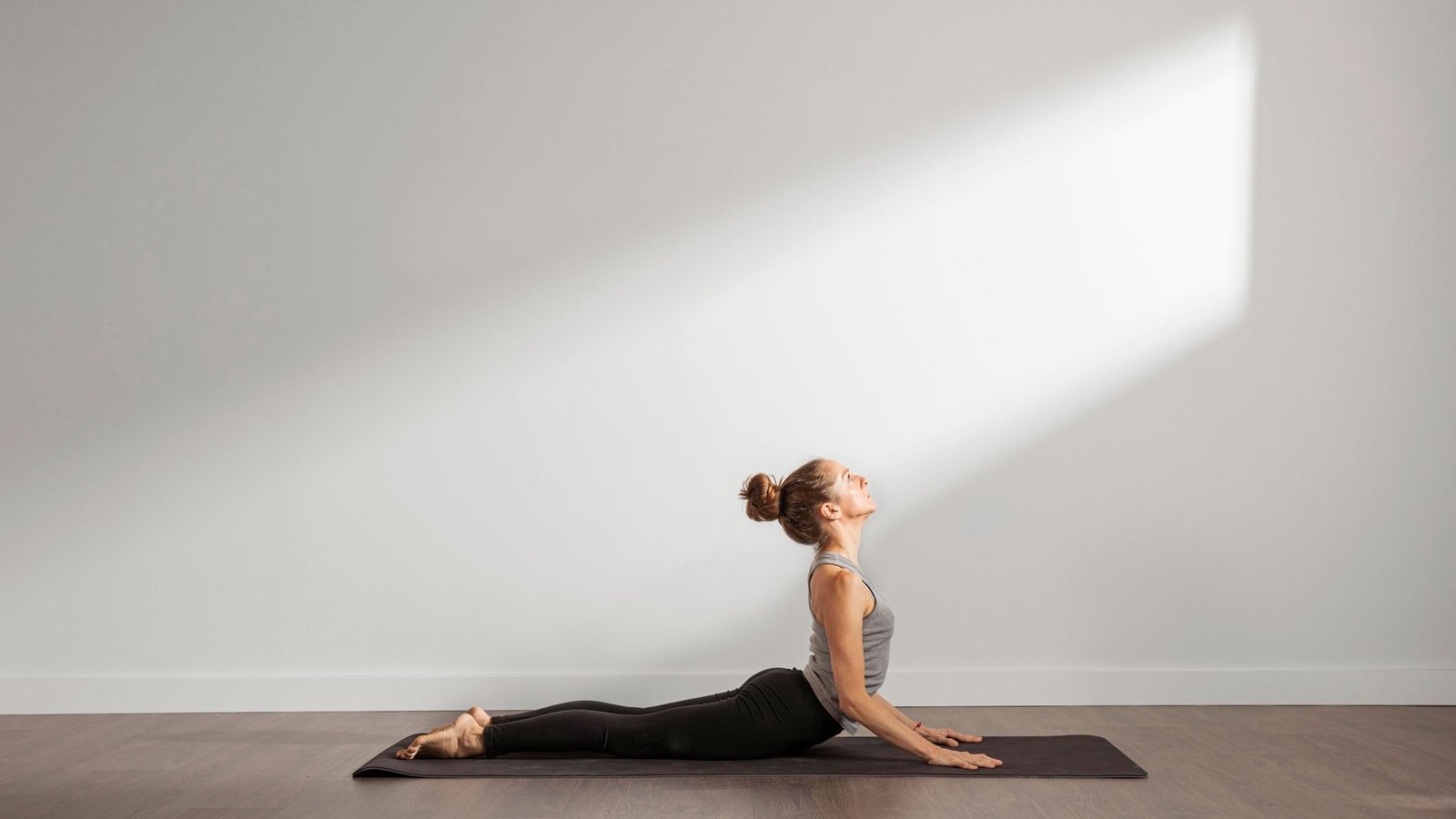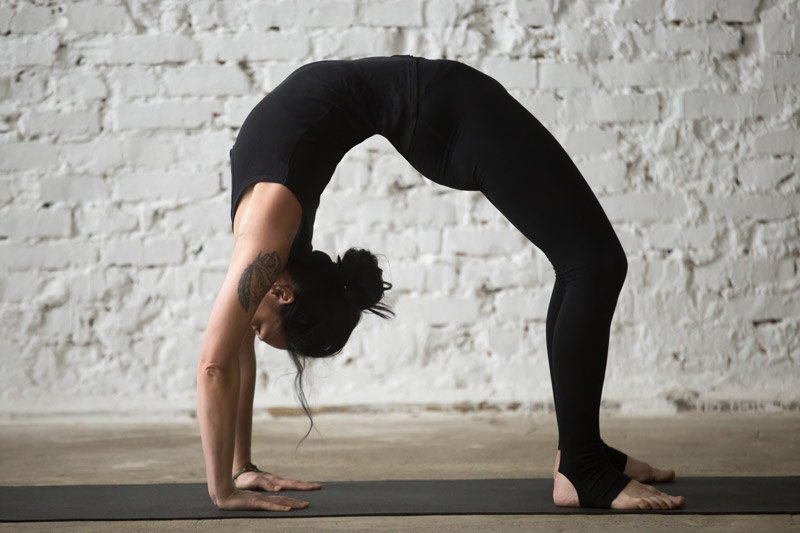Anantasana, also known as the Sleeping Vishnu Pose, is a unique reclining yoga posture that combines balance, flexibility, and a deep lateral stretch. The word Ananta in Sanskrit means “infinite” or “eternal,” and it is also the name of the serpent on which Lord Vishnu is believed to rest. This asana resembles the image of Lord Vishnu lying on the coiled serpent Ananta, hence the name. While it appears gentle and restful, Anantasana challenges the practitioner’s focus, balance, and control.
Steps to Perform Anantasana
Starting Position: Lie down on your back in Shavasana (Corpse Pose), relaxing your entire body.
Turn to the Side: Slowly roll onto your left side, ensuring your body is in a straight line. Stretch your legs out fully, one on top of the other.
Support the Head: Lift your head slightly and place your left arm under your head with the elbow bent. Use your hand to support your head like a pillow.
Lift the Right Leg: Bend your right knee and use your right hand to grab your right big toe. You may use a yoga strap if reaching your toe is difficult.
Straighten the Leg: Gently straighten your right leg toward the ceiling or as high as comfortable while keeping hold of your toe. Maintain balance on your side.
Hold the Pose: Keep your body aligned and balanced. Hold the position for 20–30 seconds while breathing deeply.
Release Gently: Lower your right leg and rest. Repeat the pose on the other side.
Benefits of Anantasana
Improves Side Body Flexibility: Stretches the hamstrings, calves, hips, and sides of the torso.
Strengthens Core and Legs: Engages abdominal muscles and leg muscles, improving strength and tone.
Enhances Balance and Coordination: The need to remain stable on the side of the body challenges balance and focus.
Improves Digestion: The gentle stretch and twist of the abdomen can help stimulate digestive organs.
Alleviates Sciatica: Helps relieve tension and pain in the lower back and legs, particularly helpful for those with mild sciatica.
Calms the Nervous System: Practicing Anantasana mindfully promotes relaxation and reduces stress.
Tips for Practicing Anantasana
Use Props: Beginners can place a folded blanket or cushion under the bottom arm for extra support or use a strap around the foot.
Focus on Alignment: Keep your body in a straight line to avoid collapsing or leaning forward/backward.
Gaze Steadily: Fix your gaze on a point to help maintain balance.
Start Slowly: Don’t force the raised leg too high in the beginning. With time, your flexibility will increase.
Practice on Both Sides: Always repeat the posture on both sides to maintain muscular balance.
Cautions and Contraindications
Back or Neck Pain: Avoid the pose if you have severe back or neck issues unless supervised by a yoga teacher.
Hamstring Injuries: Be gentle with your raised leg; do not overstretch the hamstring.
Balance Challenges: Practice near a wall if you struggle with side balance to prevent falling.
Pregnancy: Pregnant women should avoid deep stretches of the abdomen and legs.
High Blood Pressure: Practice with awareness and avoid straining, especially while raising the leg.
Anantasana is a graceful blend of strength, stretch, and stillness. It teaches us the art of holding balance in a relaxed position, reflecting the yogic ideal of effort and ease. Ideal for improving flexibility, muscle tone, and concentration, Anantasana can be a valuable addition to any yoga sequence. As with all yoga postures, it should be practiced with mindfulness and care, honoring the body’s natural limits and progressing patiently. With regular practice, this asana nurtures not only the body but also the calm and infinite






